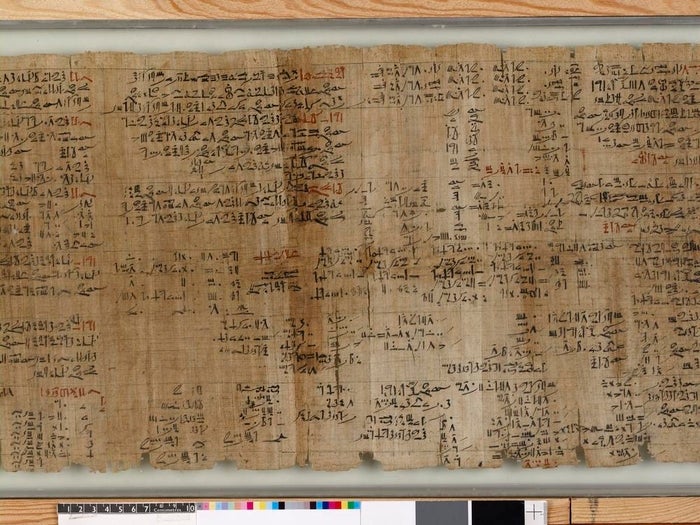What kind of math would you need to know to build the pyramids?
Ahmose, an Ancient Egyptian who lived around 1550 BC, might know where to start.
Ahmose is the scribe responsible for the Rhind Mathematical Papyrus: a sixteen-foot-long document that promises to provide “an accurate reckoning for inquiring into things, and the knowledge of all things, mysteries…all secrets.” Ahmose also claims that his papyrus is itself just a copy, of a much older manuscript that is now lost to history.

Though it was written by Ahmose, the Rhind papyrus is named for Alexander Henry Rhind, a Scottish collector who purchased the papyrus in 1858 from a seller in Luxor, Egypt. The British Museum acquired the papyrus from Rhind in 1864, along with another mathematical document, the Egyptian Mathematical Leather Roll. The British Museum still holds the Rhind Mathematical Papyrus, and while it is not currently on display at the museum, you can view it in their online collection!
The Rhind papyrus includes reference tables and sample problems in arithmetic and geometry, including how to calculate the volume of a circular granary and how to find the slope of a pyramid. There are story problems, too, including one about mice who eat grain, and the cats who eat the mice. The papyrus also includes fractions – the first recorded use of them in history!
While we have older mathematical documents from civilizations in Egypt and Mesopotamia, the Rhind Mathematical Papyrus is the earliest surviving one where the author signed his name: making Ahmose the first named contributor to mathematics in history.
It may not be a pyramid, but it’s still a pretty monumental achievement!